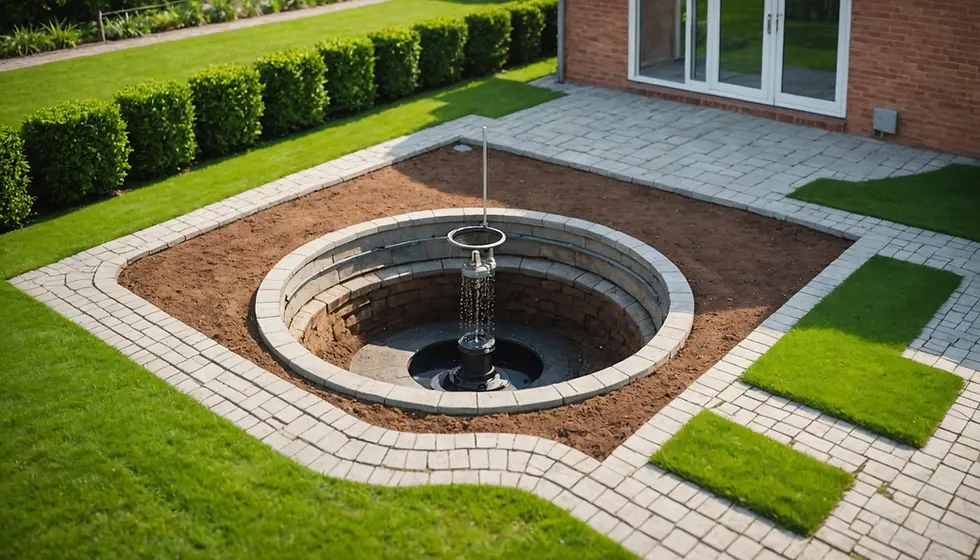How to Prepare Your Soil for Perfect Sod Installation Every Time: A Guide for Arkansas Homeowners
- Garrett Williams
- Jan 15
- 4 min read
Transforming your lawn into a lush, green oasis starts with a wise choice: sod installation. The key to success lies in a step that often gets overlooked—soil preparation. By taking the time to prepare your soil properly, you set the stage for a vibrant lawn that enhances the beauty of your home. In this guide, we’ll explore essential steps to prepare your soil for sod installation, ensuring you achieve outstanding results every time.
Understanding the Importance of Soil Testing
Before you lay down new sod, knowing the condition of your soil is critical. A soil test provides insights into its pH, nutrient levels, and overall health. For instance, around 60% of lawns in Arkansas often face nutrient deficiencies, which can hinder growth if not addressed.
You can use a local lab or purchase an at-home testing kit. The test results will inform you about amendments needed, such as lime for acidity or fertilizer for added nutrients. This foundational knowledge equips you to create the best environment for your sod.
Clearing the Area
Once you’ve assessed your soil's condition, clear the area for sod installation.
Remove existing grass, weeds, rocks, and debris. For areas overrun with stubborn weeds, a non-selective herbicide can help, inhibiting their growth and allowing your new sod to establish itself without competition. It's essential to have a clean slate; if there are remnants of previous plants, they can compete with your new sod for water and nutrients.
Grading the Soil
Grading is crucial in soil preparation, yet often overlooked.
Aim for a gentle slope away from your home, which prevents water pooling and ensures proper drainage. If water sits in your yard, it can lead to soggy sod and unhealthy roots.
Use a rake or shovel to level any uneven spots. After grading, compact the soil to minimize settling. Well-prepared soil provides a solid base for sod, helping establish a healthy lawn.
Incorporating Amendments
With a cleared and graded area, it's time to incorporate soil amendments.
For instance, if your soil test indicates a pH below 6.0, you might need to add lime. Additionally, compost can improve structure, fertility, and moisture retention. Studies show that adding 2 to 3 cubic yards of compost per 1,000 square feet can enhance soil health significantly.
Spread your amendments evenly over the soil and till them in to a depth of 4 to 6 inches. This ensures your new sod can access essential nutrients right from the start.
Leveling One Last Time
Before laying your sod, take a moment to level the soil again.
Use a rake to smooth any remaining bumps or depressions. This step not only improves appearance but also ensures even water drainage across your lawn.
After raking, you might run a heavy roller over the soil. This creates a compact surface that prevents uneven settling once the sod is installed.
Watering the Soil
Now that your area is ready, hydrate the soil just before laying the sod.
Lightly soak the soil a day or two beforehand. This helps settle the soil and encourages better sod root penetration. Proper hydration can speed up establishment by 25%, allowing the sod to take root more quickly.
Be careful not to overwater; overly saturated soil can lead to problems down the line.
Laying the Sod
With everything in place, it’s time for the exciting part—laying the sod!
Begin along the longest straight edge, such as a patio or walkway. Lay the sod in a staggered pattern, similar to how bricks are arranged, to ensure stability and coverage.
Make sure the edges of the sod pieces fit tightly together to avoid gaps. Gaps can lead to uneven growth or moisture loss, jeopardizing your lawn's health.
Rolling the Sod
After the sod installation, rolling it out is vital for maximum soil contact.
Use a 100-pound roller or walk gently over the sod. This helps ensure that your new sod establishes a solid connection with the prepared soil, promoting strong root growth.
This contact is crucial for the health of your new lawn.
Watering After Installation
Once your sod is laid, thorough watering is essential.
Soak the sod lightly, ensuring that the water penetrates deeply into the roots. In the first few weeks, maintain a consistent watering schedule. For best results, consider watering every day for the first two weeks, then gradually reduce frequency as the sod establishes.
Be mindful of not oversaturating the area, which can lead to root rot.
Maintaining Your New Sod
Successful installation is just the beginning. Maintenance is key to a healthy lawn.
Once your sod reaches about 3 inches in height, start mowing. For Bermuda sod, aim to keep it at 2 to 3 inches tall. Regular mowing promotes healthy growth and enhances appearance.
Also, fertilize based on your soil's needs and monitor your lawn for pests. Keeping track of these factors can boost your property value by as much as 10% when done right.
Closing Thoughts
Preparing your soil for sod installation may seem like a lengthy process, but thorough preparation leads to outstanding results.
By following these steps, you create the foundation for a thriving lawn that looks beautiful year-round. If you're considering local sod installers or delivery service, investing time into soil preparation gives your new sod the best chance for success.
Achieving a perfect lawn goes beyond the sod; it's about the soil underneath. When you dedicate time and effort to soil preparation, you’ll enjoy the benefits of a lush, green yard for years to come.
Every step you take in preparation pays off in the long run, resulting in a vibrant backyard you'll be proud to show off. With the right approach, you are now equipped to handle sod installation like a pro. Happy sodding!





Comments